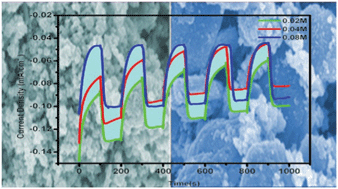Nanocrystalline copper indium selenide (CuInSe2) particles for solar energy harvesting†
Abstract
High quality copper indium selenide (CuInSe2)

* Corresponding authors
a
Energy Research Institute @ NTU (ERI@N), Nanyang Technological University, Research Techno Plaza, Singapore 637553
E-mail:
batabyal@gmail.com
b
School of Materials Science & Engineering, Nanyang Technological University, Singapore 639798
E-mail:
YMlam@ntu.edu.sg
c School of Physical and Mathematical Sciences, Nanyang Technological University, Singapore 637371
High quality copper indium selenide (CuInSe2)

 Please wait while we load your content...
Something went wrong. Try again?
Please wait while we load your content...
Something went wrong. Try again?
M. Wang, S. K. Batabyal, Z. Li, D. Li, S. G. Mhaisalkar and Y. M. Lam, RSC Adv., 2013, 3, 9829 DOI: 10.1039/C3RA40961A
To request permission to reproduce material from this article, please go to the Copyright Clearance Center request page.
If you are an author contributing to an RSC publication, you do not need to request permission provided correct acknowledgement is given.
If you are the author of this article, you do not need to request permission to reproduce figures and diagrams provided correct acknowledgement is given. If you want to reproduce the whole article in a third-party publication (excluding your thesis/dissertation for which permission is not required) please go to the Copyright Clearance Center request page.
Read more about how to correctly acknowledge RSC content.
 Fetching data from CrossRef.
Fetching data from CrossRef.
This may take some time to load.
Loading related content
